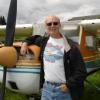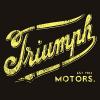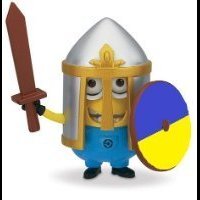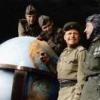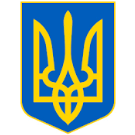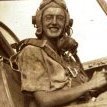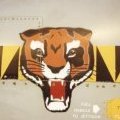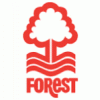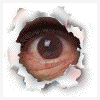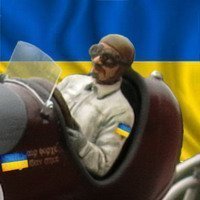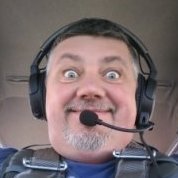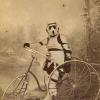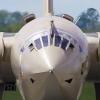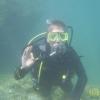Leaderboard
Popular Content
Showing content with the highest reputation on 28/12/17 in Posts
-
Hi All, this is my last off the bench for 2017; Heller's 1/72 Me-163 Komet with Scheuch-Schlepper. The Komet seat is a resin addition originally for an Fw-190 and the pitot is Albion Alloys tube. In other respects it is as Heller intended. Paints are Lifecolor finished with Xtracrylix satin varnish and the decals are the kit's own, with the exception of the swastikas. Happy modelling.18 points
-
Finally finished it! Quite an awful kit which requires lots of extra work and some aftermarket goodies - Eduard PE's and Matra Magic II missiles, Master pitot tube, L'Arsenal resin Raphael SLAR pod and Colorado decals. But in the end it's a great looking jet Best regards from Czech and happy New Year to everyone. Andrew18 points
-
Evening All, This was my contribution to the Flying Boats GB which will run out on 7th January 2018: the build thread can be found there if you are interested. I am posting these photos her plus some notes on the type as it is generally little known: I did not know about this type until I came across it by chance about 15 months ago. It is completely scratch built from wood, brass rod, plastic sheet, rod and strip, and is rigged with rolled copper wire. I apologise for the backgrounds but the weather and light are very poor at the moment. I will take more pictures in better light when I have completed the base for this model: this will be my next project. Any comments would be welcome. Claudius Dornier had joined the Luftschiffbau Zeppelin (Zeppelin Airship Works) in 1910 where he worked on a number of technical problems associated with airships. He was transferred to Zeppelin’s private design bureau in Friedrichshafen to work on an 80,000 cubic metre steel airship capable of flying across the Atlantic in 1913. Following the outbreak of European war in August 1914, Zeppelin established the VGO-Staaken venture to build giant wooden bombers, but Zeppelin was convinced that the future for aircraft was in all metal construction, so Dornier was sent to an old airship shed at Seems near Friederichshafen on Lake Constance to design a giant flying boat. This became known as the Rs I and was the first all-metal aircraft to be built. It was a huge biplane with a 143 ft (43.5m) wingspan which carried out extensive taxiing trials on the lake in late 1915 but was wrecked in a storm in December of that year before it could fly. While the Rs I was undergoing trials, Dornier and his team were working on a second project which was of a totally different design. This had a very broad hull which gave it inherent stability, with a high mounted wing with a broad low aspect ratio, open tail boom and unusual biplane elevator. Small wings were fitted to the rear of the hull to support floats, but the latter were found to be unnecessary and were never fitted. It was built from duraluminium and steel and covered in sheet duraluminium on the hull and fabric on the flying surfaces. It was powered by three engines buried in the hull driving pusher propellors via drive shafts. It made its maiden flight from Lake Constance on 30 June 1916. In mid - July an accident occurred which caused the aircraft to land on the water. On attempting to take off the middle propellor transmission shaft broke which severely damaged the tail boom. It was decided to completely rebuild the aircraft and work was completed in early November 1916. The hull was redesigned with the step moved further back but more importantly a fourth engine had been added and all had been moved to a position between the hull and the wing. They were mounted uncowled in tandem pairs and drove tractor and pusher propellors - a feature which was to be used by Dornier on his flying boats until 1945. The wing was lowered and balance horns were added to the ailerons. The massive V struts which supported the wing were altered so that they now attached to the hull sides and the boom attachment to the hull was changed so that the rear propellors had clearance. The biplane elevator was retained, but the stub wings were reshaped to have rounded tips and a decreased chord. Materials shortages and poor quality fuel retarded testing, with constant problems being experienced with the engines. The engines were found to be too cold so very neat cowlings were fitted, following which the radiators were found to be too small as the engines overheated. In May 1917 during landing practice, the machine came down hard on the water and the central boom of the tail broke. The pilot did not notice and tried to take foo, with the result that the sagging tail dragged the aircraft back on to the water and the whole unit broke away and sank to the bottom of the lake. In July the machine reappeared with a new tail unit this time with a simpler pair of fins and rudders and single elevator. Flight trials resumed and it was shown that it could take off and climb on 3 engines. It was also found that the pusher engines were more efficient when working alone than were the tractor engines. It reached a level speed of 128kph over the lake. In August it was carrying out a 6 hour trial flight prior to being sent to Norderney seaplane base for trials by the Navy when number 4 engine backfired violently. No 1 propellor disintegrated as a consequence, so both engines were shut down and the aircraft was put back down on the lake. The damage was found to be extensive and is was decided that it would have been uneconomical to rebuild it as the Rs III was near completion. Instead the airframe was broken up and the parts used for further tests and experiments. Dornier and his team learned many valuable lessons from this prototype. The broad inherently stable hull, tandem mounted engines, all-metal construction, high wing with low aspect ratio, all became characteristic features of later designs, but above all reliability and flexibility were to be hallmarks of the Dornier company. Here is an Avro biplaneis next to the completed model to give an idea of size, (the biplane is scratch built too): And because you cannot see everything from a distance, here are some close ups: A happy 2018 to one and all. Thanks for looking. P17 points
-
This is one of my favorite sections on Britmodeller, I love to see everyone's collections all together. I had a slower year than usual, but still managed nine completions - all in 1/72. Recently, I've been on a kick of trying to match an inspiring reference pic with my builds, it's an enjoyable way to go. My first 2017 completion was the new Eduard Spitfire XVI. REFERENCE PIC LINK 1/72 effort Next up is a Spitfire FR18 modified from the new Sword Mk XIV kit. REFERENCE PIC 1/72 Attempt And then another Spitfire FR18 from the AZ kit. REFERENCE PIC 1/72 attempt If you make three Spitfires, it's a good idea to go ahead and make six Spitfires. Spitfire Mk 24 built from the Airfix Mk 22 kit. REFERENCE PIC I don't have b&w attempt for this one. Besides, I modelled VN318 as it appeared while still in RAF service rather than the RHKAuxAF as depicted in the reference pic. A quick out of box Airfix Mk 22 - sorry no reference pic this time. And finally, a Spitfire F21 cobbled together from Special Hobby, Eduard and Airfix parts. REFERENCE PIC 1/72 Attempt Next is a Helldiver from the 1/72 Academy kit. Inexplicably, it is not a Spitfire. A British Pacific Fleet Corsair IV from the Tamiya kit. REFERENCE PIC 1/72 Attempt And number nine is another Tamiya Corsair. REFERENCE PIC 1/72 Attempt (albeit of a different Essex based F4U-1D) Happy New Year everyone!14 points
-
Hi all! As a break from cramming detail into Matchbox biplanes, I embarked on one of my Telford buys, the AZ Chipmunk - on the suggestion that I needed a bit of a rest and a mojo restorer! It's quite a nice kit, with very delicate surface detail and a well-detailed interior. It's rather lacking in some of the finer details however- I added tie-down rings, actuator jacks for the flaps, pitot probe, catches for the sliding portion of the canopy, two blade aerials, a scoop on the cowling, the little strakes on the wing leading edges, brake lines, etc, plus drilling out the exhaust and all the scoops. Fit is questionable - it's been a while since I built a "proper" short-run kit and it was a bit of a shock! There's thick flash, the wing-fuselage joint needs a shim, and the cockpit won't close up unless you shave off some of the sidewall detail to admit the sides of the seats. You need to shave a goodly amount off the fuselage decking sections under the canopy Also, the tailplanes fit much better the wrong way up - I thought this was the correct way of fitting them until I noticed that the elevator trim tab was on the wrong side! Nothing a bit of filler and a rescribe couldn't fix... Decals are a right mix, on account of the kit schemes being a bit uninspiring and quite a few of the stencils being inaccurate. I raided the spares bank for an old Airfix kit sheet, which provided most of the stencils and the wing walkways (AZ provide these but they're the wrong shape and don't follow the panel lines). The markings for WP901/B of 6 Air Experience Flight (based at Abingdon in the 1970s-1980s) came from the excellent S&M "Post War Piston Trainers" sheet - although they're super thin and settle down like a dream I had to double up all the roundels in order to get them remotely opaque! The most outlandish decal source is the red First Aid cross - which is part of a 41sq insignia from the Italeri Jaguar! So a bit of a mixed bag - Not as easy to build as the Airfix, and like that kit is a bit of a blank canvas for added external details - but if you've got the skills to make it fit, it's a considerably more refined starting point, and you don't have to attack it with sandpaper to get rid of hundreds of scale fist-sized rivets!13 points
-
I have always had a soft spot for the Lightning, built my first from Frog-Hasegawa when I was a teenager. Not really a beautiful aircraft, but it transmits a sense of brute force... very much like a MiG-25 or an A-10. Then the Trumpeter kit came, and I decided to build it. Then the Airfix kit came, and being more accurate in shape, I decided to build it. Then the Sword trainer came, and... why not? So here they are. The Trumpeter F.6. With Aires cockpit, Aires corrected exhausts, Xtradecal decals and Master pitot. The Airfix F.6, OOP except Xtradecal decals, Master pitot and scratchbuilt cannon muzzle brakes. From a 1.25 mm steel tube with cuts made with a cutting wheel. The Sword T.5, OOB except the Master pitot, and the fin decal. The original was totally out of scale, so I used the one of the Airfix kit. The resin seats and colored photoetched parts are from the box. I couldn't get access to the forum for 1 day, so now finally I've been able to post pictures from Imgur.13 points
-
Merry Christmas to all! here my last build in 2017: Eduard`s nice MiG-21bis. Add a metal pitot by Master and some PE´s by Eduard. Decals for are Croatian AF MiG-21bis D are out of the box.12 points
-
For the first two years after I returned to the plastic mangling in 2015, I was averaging one completed build every two weeks, but then I got more into improving on what I found in the box, concentrating more on quality rather than quantity. I also tried my hand at some reasonably ambitious scratch building, so the completed kit count this year has been significantly reduced. First off: Italeri Ju-87 G-2 Stuka 1/48. An excellent kit (with a couple of issues) and a very enjoyable build. MIM (Mojo Intensity Measure) = 9/10 http://www.britmodeller.com/forums/index.php?/topic/235019306-italeri-ju-87-g-2-stuka-148-%E2%80%93-done-and-dusted/ Then, the biggest project I've attempted so far: Airfix Battle of Britain Ready for Battle set (exceptionally good kit/s and exceptionally good value); plus, Italeri Mk.I Hurricane (pain in the rear end); plus, Scratch built RAF hut & contents. All in 1/48. MIM = 8/10 http://www.britmodeller.com/forums/index.php?/topic/235022475-gorbygoulds-small-slice-of-bob-%E2%80%93-warning-rivet-counters-are-requested-to-sit-down-and-brace-themselves-before-viewing/ The next was a bit of a change for me: Fuman 88mm FLAK 18; and Tamiya Kubelwagen Type 82. These are both intended for a future diorama. The FLAK build was complicated by the instructions being entirely in Japanese and me being entirely in English. MIM = 7/10 http://www.britmodeller.com/forums/index.php?/topic/235022792-fuman-flak-flash-fettling-fun-%E2%80%93-i-just-need-to-learn-japanese-first/&page=2 Finally: Italeri Hs-123A 1/48. Horrendous kit that took me four months to beat into submission, although that was partly because my my modelling mojo was at an all time low due to my dad's illness and subsequent death. MIM = 1.2/10 http://www.britmodeller.com/forums/index.php?/topic/235029843-hs-123a-itareris-finest-mojo-mangler-or-i-should-have-gone-to-gaspatch/ Fortunately my MIM is now back to a much healthier 7/10 and I'm working on two Luft 46 builds. Thanks for taking a gander and I wish you all a magnificent modelling 2018. Gorby10 points
-
Evening All, Here is my completed contribution to the GB: the Zeppelin Lindau (Dornier) Rs II late in its career. I apologise now for the photo backgrounds but as I explained in the build thread the light and weather at the moment are very poor and I have had problems taking pictures. The size of the model does not help either! I have not included my usual notes on the type - I will do so when I post photos in the RFI section of this site, so if you want to know more about this aircraft I refer you to there. In the meantime I hope that these are not too many pictures..... Do you remember the Avro biplane in the build thread? Well here it is again just to give you an idea of the size of the flying boat: And some close ups because you cannot see all from a distance.... Thanks for looking. P10 points
-
Your more than welcome Johnny. Roight up then. Hope you all had a great Christmas. Having taken a brief interlude from the merriment (alas not necessarily a good idea to mix alcohol, sharp knives and toxic chemicals), I’ve got back to the bench. Before sorting out the canopy I had a little task to sort out which is the padded leather lip on the cockpit. As you can see top right in the piccie below courtesy of Wings Over Europe.com, it is quite distinctive. This is redolent of most references I’ve seen. It may not have been the same colour or quite as luxurious originally, but a padded lip around the cockpit rim there most certainly was. Matchbox gives you something of sorts, but it doesn’t quit cut the mustard, I think the brown leather trim against the nmf will give it some nice contrast and interest. I sanded it back a little then one bit at a time glued in place some plastic rod. Trimmed and sanded a little here is the finished product. I had to add a small cut to account for the door. I realise there is a little lip showing just above and to the upper left of the cut. I may give this a little more attention, but this is largely masked by the windshield frame. With that sorted I could get cracking on the windshield. By far and away the most difficult and frustrating part of this element is its sheer size, well not so sheer size being itsy bitsy, and fiddlesomeness associated with trying to work with anything this small. I cut and shaped a replacement from acetate which was okay enough. But then what to do for framing? I considered masking and painting, but in the end I opted for thin strips of take-away foil and a strip of curved beer can foil. I won’t bore you with the details of their manufacture, needless to say it was fiddly and time consuming to get them neat and thin so as not to look like bits of foil stuck on plastic. I realise they actually are bits of foil stuck on plastic, but I was hoping for well, at least an illusory scale effect so they don’t look too much like bits of foil stuck onto plastic. As ever the most challenging element is trying to safeguard against bits pinging off into oblivion, which invariably always happens to your finest crafted piece, and the same piece you always find when searching for something else that’s pinged off into oblivion, but not before you have everything glued in place! Thus I used my folding tool to hold the acetate while I manoeuvred the other bits in place. They then received the finest of finest little dabs of cyano in discreet places before being trimmed and then the whole windshield being dipped in klear to cement everything in place. Here is the finished article next to the kit version (ignore the little bit of filament come fuzz that attached itself to the right hand pane, I’ve since removed it) I don’t want to be too unfair to the kit canopy as afterall, I have trod on it so it does somewhat resemble a nail clipping. That said I’m pleased with how it came out. Here it is resting in place. Of course gluing it in place will be a faff, but I will either use a thin smear of canopy glue or epoxy resin, either will easily be strong enough to hold it in place. The next bit of detailing, and one that 1) I had been putting off; and 2) in relation to 1), had been putting off because I didn’t know how to do it. Anyroad after a little experimentation with trusty Albion Alloys I bent a thin strip of foil around a drill for the ring. The reticules where made from 0.1 Albion Alloys nickel rod. They were manoeuvred into position using a tooth pick, and then “glued” using little dabs of klear. The original Fury crosshairs have a centre circle at the intersection of the reticules; sorry folks that will have to wait for another build from a far more adept modeller. Anyroad here it is next to the gunsight as proof it does not look too much overscale. Hopefully the crosshairs will stay in place and won’t be blasted away with my airbrush. Back soon.9 points
-
Thanks chaps! I did actually find the missing part the next day - on the floor beneath my chair, where I had looked exhaustively. It was definitely NOT there at the time, so I have no idea where it had been hiding, and how it got there! Today's work started with finishing the gunner's seat. A couple of pieces of .010" brass rod were added to what I already had, and, apart from the sling itself, I'm calling this complete and ready for paint. I should probably have soldered it, but don't yet have any flux. If it falls apart I shall buy some........... After that I looked at the resin wheel wells. The set was designed for the Hasagawa kit so I wanted to make sure they would fit.The first job was to remove the pour stubs with a saw, then free the wings from the sprues, tape them together and see what needed to be done. That looks as though it should fit with a little work! I marked the edges and carefully removed a small piece at the front and rear of the sidewalls, then sanded down the sides to match, with many stops to check progress. After a while, the sides were almost right, so I sanded down the rear wall to fit under the wing. I also sanded a slope onto the underside at the rear to thin it and make it fit better without removing detail from the top edge. Final fitting showed one small area that needed a little more adjustment, and that was dealt with by sanding the outer edge of the lower wing centre section shown circled here. The upper side of this part (facing towards the cutting mat as seen in this pic), has a slope to match the wing curvature, this was sanded off to match the moulded detail in the inner edge of the wheel wheel and flatten it off. This is how it looks now I can live with that! Here are the original and modified parts side by side to show how much was removed. The inner edges together outer edges and rear ends ( you can also see the slope I sanded onto the upper side) As you can see, not too much was removed. The rear edges will need a little work to blend them in, and the fronts will need to be extended to block the gap, but that shouldn't be too difficult. It may even be possible to use part of the kit parts grafted on to do the job. Thanks for looking in! Ian9 points
-
Hello I decided to blow the Christmas cobwebs away with a visit to Duxford, hoping for some interesting images due to the recent snow. I'm pleased to say that the museum was reasonably busy (primarily with menfolk of different generations!) In my opinion, the shop is a shadow of its former self, with fewer aviation-related objects, and more kitchen-related items! The last time I visited, there was still a reasonable selection of Airfix and Revell model kits, but today, there was nothing more than a handful of Airfix Starter Kits. I wonder who the product buyers are, as they are not targetting the current and budding aviation enthusiasts! I generally don't pay much attention to the Duxford Aviation Society's collection of airliners, but as they are (thankfully) now the only exhibits displayed outside, I decided to take some pictures. I was pleased to see the Trislander for the first time and also some Ground Service Equipment to add some visual interest to the airframes. I hope you like the wintry images! Thanks for looking and I wish everyone a Happy New Year.8 points
-
The fourth one this year, a record for me! It's the Tamiya 1/48 Skyraider in a French Air Force scheme with MDC update set & decals. They were used in the Counter Insurgency role in Algeria. This particular aircraft was operated by EC2/20 "Ouarsenis" from Boufarik in 1961. The MDC set includes resin aerials, rockets & rocket rails as well as brass fins for the rockets. These were individual, 4 for each rocket x 12 rockets = 48 fins. I made such a town halls of the first one that I gave up. The kit itself goes together without any problems, as you'd expect with Tamiya. I'm reasonably pleased with the results, any comments or criticisms welcome. Pete8 points
-
More done just before we take the dog on a walk up wychbury. tail fins tidied up. wings look about right now at this angle. the gap at the root had to be filled. I used PPP. then a damp cotton bud and voila. The dashboard type bit got added with the new view finder radar thing. looks ok in there now. all the black bits got a gloss coat so I can weather later. This had to dry so I added a few more pipes to the wells and brake lines and mounting joints to the legs. heres a dry fit with the wheel. busy enough for me. Just the other side to do now. Right walk time. see you lot later. Shut the door on your way out. Take care y’all and hope you’re having a break from the food and booze with a bit of plastic fantastic. Johnny.8 points
-
Hello all Im going to start my thread here for the Group build. This will be a Number of firsts for me. It will be my First Group build ever, also my first ever 1/48th armor build. From what im seeing of the quality it wont be my last. Ok lets start with the obligatory photos. Box cover first ⬇️ The Artwork for the kits markings. ⬇️ Finally the contents of said box, as you can see its all in plastic so 0% work done at this point. ⬇️ And the second of the content photos. ⬇️ I have no etch im going for a straight up build. However im not so sure about the markings. I have a request in the M3/M4 chat looking for help with that. I may be able to modify some of my stowage from my 1/35th for this such as tarps,bags, and similar. I might use that to liven it up. I guess thats all for now see you saturday 👍. Dennis7 points
-
Hi all, not much from me this year - a mere 2 completed builds - for a whole host of reasons, but I can honestly say I am very proud of what I've built and blogged on here. 1. AZModel 1:72 Morane-Saulnier Type 'G', as flown by Staff Captain Pjotr Nesterov of the Imperial Russian Air Service, WW1 For the full threads, click on the links: WIP RFI 2. Alam Halfa Diorama (1:35) featuring: Academy M3 Grant 'El Alamein 1942' kit, plus several modified figures For the full threads, click on the links: M3 Grant: WIP RFI Figures: WIP (no RFI for these) Diorama: WIP RFI So that's it, here's hoping for a happy, healthy and of course productive 2018 - for all of us7 points
-
This has taken the better part of 2017, in between going back to work and a nice long summer trip to the Nats in Omaha. This is the progress so far, I'm on the home stretch now;7 points
-
Found the construction of this kit a chore, but it really came to life for me during the weathering stage.7 points
-
2017, 6 builds, one every 2 months ... not so bad! in order: - Hellcat eduard 1/48 - Typhoon hasegawa 1/48 - Typhoon eduard 1/48 - spitfire LF.IXe tamiya 1/32 (my first) - P-47 D-40 tamiya 1/48 and the last one f4u-4 corsair hobby boss, a real s**** this model, everything is wrong! I hated this building, not had the courage to make the changes!!! (only one photo ... not proud of the result)7 points
-
No.2 is finished; I'll do more glamour photos for the gallery tomorrow7 points
-
Now where was I ? Oh... buried way back in the depths of page 8 after my vacationary jaunt back to the motherland. It was pretty much as I remembered it. Cold. Wet. Miserable. Wet. Cold. Wet. It only rained twice but the ground was wet the entire time I was there, and it was cold and wet! Now I remembered one of the reasons I headed over here. But, modeling... 'tis after all what we are here for is it not? Well, I have hardly been anywhere near the basement in the last few weeks except to grab a few tools to carry out SWMBO's honeydoo list. Sadly, today she got called into work - I was gutted. That meant I could do things that I wanted to do - such a strange feeling. Strange indeed. It seemed so long ago that I had to read back a few pages to see what I had been doing before I left. Not much it seemed. But today we have an update! Of sorts anyways. One of the last tasks I accomplished before leaving was to glue a little square f plastic and 4 x Meng Bolts and washers onto a piece of something from the spares box. Which then in turn got glued onto the end of the tail rotor gearbox. This is visible through a small opening in the tail and while not strictly accurate is enough of a representation to pass, considering it's/was Christmas. Another task saw me ruining my eyesight while attempting to drill into this piece of tiny brass tube. Which in turn had a piece of brass rod inserted into the hole then soldered up. The tube was then cut as close to the rod as I dared... ... and then it was filed down, again, as close to the rod as I dared - can you see where I'm going with this? Hint: There's a tail involved. That tube drilling soldering cutting filing operation was repeated on the other side of the brass rod. Yes, I'm trying to make a hinge thingy. Fly for some reason do not even attempt to make any kind of representation on the hinges inside the tail. So that's going to be left to me I'm afraid. They do seem to have some kind of hinge present on later kits but not the HC2, or at least the one I have. A small wedge of brass was then soldered in to the vee area. And a dry fit to see what's what. Then I decided I didn't like it and put that aside for a while - while I ponder. Now it was time to try something new... Yes, Alchemy! I have been threatening to try this for sometime and decided that I wanted to use PE in the tail area (or so I thought) I had now gone as far as I could building the tail without the PE so it was time to cast some runes, some chicken bones and get out the UV Nail Lamp. @Fritag had made it look so easy. All I needed was a few hours one afternoon and I'd be done. Simple. Fast forward about three days. I followed all the instructions. I sacrificed the right small furry animals. Lots of coffee. Boy was it a lot more difficult than I had imagined... mainly due to my own ineptitude it must be said. The steps themselves are straightforward, however, there is a bit of technique involved and it took my dumb bottom a few attempts to realize there was a technique and actually start to apply it. Note - this process was so intensive I forgot to take all the necessary photo's so you'll just have to bear with me. Cleaning the brass was easy enough. IPA and elbow grease - lots of it. However the next step was a bit of a surprise. Getting that photo resist film onto the brass drove me nuts. I kept getting water trapped under the film and it wasn't apparent until I'd fed the brass through the laminator.... a small bubble of water, apply lots of heat and what does water do ? Of course it boils! A fair bit of film was burned (aha a pun) doing that. I eventually arrived at a workable solution. Place the brass on a piece of kitchen towel and apply film to one side of the brass. Don't use too much water - it doesn't take a lot. As you work the film down on to the metal, the kitchen towel will wick out the surplus H2O. Once one side is done. Trim the excess film away from the brass - using sharp scissors. I found that if I left too much overhang, then when I tried to bed the second side of film down, the two films clung together making it impossible to get all the water out. Cue missing photo.... just imagine it. This was one of my first attempts. The navigators, sorry... observers among you will note that I didn't use black ink. Simple reason - Epson printer, and the black print head has a small blockage that I can't seem to clear so I opted to use a color, in this case a dark green. I used the "best photo" setting with semi gloss paper selected at the highest print setting. I also set all my line widths to 0 in the pen settings and was actually pleasantly surprised at the quality of the print. Ooohhh it's getting exciting now.... even the clamps are happy! Note that I have taped a section of sandpaper to the back of the glass to prevent light bounce. Unfortunately that first attempt went the way of the dodo when I tried to develop it. Cue trial number > 1 Then guess what happened at the next attempt ? Seem familiar? At this point it was time to take a step back and follow the old adage... RTFM ! Yes, dear readers... Read The Fritag Manual !!! I had originally been following @Cheshiretaurus's instructions - and great they are too, however something wasn't working for me. I was sure I had followed the ratio's of the different solutions correctly and it wasn't until I reread Fritag's comment about dunking the brass in the developer solution for a few seconds then dipped in water and attack with a soft brush and though I'd give that a try. Well, I found that it only took about 5 seconds in the developer then quickly under the tap and wipe gently with a soft brush was enough make things work. Eventually I arrived at this. Looks great doesn't it ? Nice resolution of detail, rivets and all. But prior to that, I had broken rule number one - print the negative version stupid !!!! In my defense I argue that since I was designing Draftsight and had my background color set to black, it confused my already addled mind and a stuffed up! Once I changed the background color to white (which I hate) I could see what I needed to make positive and what needed to be negative. Here's what NOT to do! Cue attempt >1+ne Eventually I got things right and in my naivete decided I would try double sided detailing. Well it nearly worked! Sort of. Maybe. Well, believe it or not but that was actually encouraging - it proved I could dissolve metal - all I had to do was get the other steps before it right and I was on to a winner! Cue yet more attempts... At least the green seems to work fine. Note: The blue backing paper is still on the one on the right here in this shot. Since I had stuffed up so much I reckoned another few stuffers wouldn't go amiss. So in the interests of scientific discovery I decided to print one version with the ink side in, and the other version with the ink side out to see if any difference showed up in the results. This (hopefully) is a slightly better shot showing the amount of detail you can capture in the print. What is doesn't show the laws of physics and the laws of chemistry. Yeah, I can capture that detail in a print but I forgot some basic rules about etching - the relationship between the thickness of the metal being etched and the smallest gap that can be etched. Suffice to say that a lot of those rivets are not going to show up in the final etchery. However, after yet more attempts at alchemy we have now progressed to this stage. It's only taken me around three days of failure so far. Encouraging is it not? Well, we'll wait and see what happens. Back in an hour or two....7 points
-
Back to work on the Fang. Gradually getting the geometry of the undercarriage to look a bit more realistic: And fairing Trumpeter roots into the Barracudacast resin tails - elevators and rudder dry fitted, but the whole ensemble is a considerable improvement on the rather lifeless original: Still have to add a small section at the bottom of the rudder, above the tail hook assembly. More soon Crisp6 points
-
Simon & Lady R., Jaime, Keith & Johnny: festive felicitations right back at ye - I hope you've had a satisfying few days? Thanks Tomo. As to the lunch: hairs, chest, put, etc. I can report that there has been some pigmentation started at this end. Even the fervent and faithful amongst you may have harboured doubts about that ever happening before the New Year. All masked-up and ready to rock the booth: Handles added to the doors: ...and added to all the other bits clustered together on the basis of shared colour: Putting the bits in groups like this is also an excellent way of me realizing all the little bits that had been tucked away 'safe' over the last few months had to be retrieved from where I'd forgotten they were put.... All metal brass areas and the new framing around the canopy treated to some black Alclad Primer & Microfiller: I forget just how truly excellent that stuff is at showing up flaws in your work (it showed-up for example a 'ghost' lip in the photo above where I'd added Milliput around the front of the canopy that Halford's grey was a bit 'vague' about revealing) as well as the seductively silky finish it gives. I must order more in and use it more regularly! In one particularly useful overhead shot of one of these Dorniers hanging from a crane there is some excellent detail regarding wear and tear to the high traffic areas on the aircraft, so I've devided to recreate this using the hairspray method using a layer of Alclad Aluminium as a base for the process: Wear on the sponsons would have been from crew entering and exiting the aircraft through the gondola doors, as well as refuelling, fuel tank replacement @etc. On the upper wing these regions at the front match where the mechanics would have accessed the engine, whilst to the rear of the canopy is where the ground crew stood to rotate the front prop: As well as this, the aircrew seemed to like sitting with their feet dangling over the sill of the cockpit roof in that kind of louche Bryan Ferry pose you expect from naval aviators.... Alclad Steel added as a base layer to the MG 15s and padding for the trolley: The gunthingies got some too, for similar reasons: Plus the trolley itself: The guns and will have some thinned down black added when dry to give a gunmetallic effect, whilst the mounts get a slightly more opaque layer to approximate black lacquered metal. The trolley parts get a layer of dark grey and a thinner layer of black, to be hairpsrayed into a more scuffed condition that you might expect from have seaplanes plonked on them. I'm assuming that the very top horizontal on either side of the trolley was (creosoted?) wood, so will give that some appropriate effects also. I began on the aircraft by sketching in the splinter demarcations freehand: The RLM73 is my own mix (from Tamiya XF63/69/73), whilst the layout itself is taken partly from the kit instructions, backed-up by what I can see in the classic reference shots taken from HMS Somali and the contemporary camouflage diagrams reproduced in Herrick & Kiroff's Luftwaffe Camouflage & Marking 1933-45. All three of these seem to tally pretty closely. I hadn't studied the methodology before but was fascinated to read about the manner in which the splinter patterning on bombers and maritime aircraft was produced from a series of superimposed grids - one of those things I'd always wondered about given the pattern-repetitions involved. As an example of photographic differences: The same colour as above seen in overcast daylight: and under a daylight-rated LED: Colour temperature identical in both. Because the hairspray technique is being used here, the Tamiya mixture sprayed above was thinned 50/50 with water due to reading that using water makes it easier to scuff and scratch the worn areas away again. I hadn't realized you could thin Tamiya acrylic like that as I'd always used a homebrew thinner before. I also haven't been too fussy about the finish of the RLM73 above as I'm going to use the salt method to add mottling across the upperworks later and started the variegation at this level with the initial application of paint. I'll mask that off now tonight in preparation for some RLM72 tomorrow. One last thing I thought you might find of interest. Last night there was an exceptionally rapid drop in temperature after sunset resulting in frost patterns appearing on the Velux windows within a few minutes. Seen from underneath against the moonlight they were incredibly beautiful and feathery - like there was an Archaeopteryx fossil hidden in the glass... Night me dearios. Tony6 points
-
Greetings Sherman Fans. My entry for this GB will be this Photo for discussion only from the excellent walk round HERE. I may also make an instructor figure as this is a driver instructor in the Israeli Army.... After that I assure you things will go downhill.... This is what I'll be starting with My big box of unloved Sherman bits left from several stalled and abandoned builds. Fortunately there are enough bits to build this vehicle but I will be replacing the horrible HB tracks with THESE from OKB Grigorov and using his drive sprockets HERE. The HB tracks are a little narrow due to overthick drive sprockets. But they seem right for the slightly narrower items fitted to the T29...... The M4A1 upper hull has had an engine bulkhead added to keep the lower hull aligned and it's engine deck removed for another project which, as you may guess, never got finished. Roll on the 30th!5 points
-
5 points
-
My entry for this GB is Italeri's M-32 Recovery Vehicle. Undecided at to build it with the lifting arm raised or stowed. Would like to build it raised but need to check if it will fit in my display case. So what's in the box? Also have AFV Clubs M-10 in the stash, but saving that one of the Britmodeller 10th Anniversary GB.5 points
-
Unlikely to get any of the F-4J builds completed before the year is out so it seems like a good time to give the annual run down now. In no particular order; 1. South Atlantic Shoot Down 2. Testing Times for the TSR2 3. A-6 SEA Experimental Scheme Bomb Drop (Try saying that quickly after a few beers.....) 4. 15th September 1940 5. Taking the Barrier 6. High Speed, Low Level TSR2 7. Head On Attack 8. Anti Shipping Strike 9. Tiger Hurricane ........ and my modelling claim to fame for this year ended with my 74(F) Tiger Squadron collection going on display at the Norwich Aviation Academy last Friday. Thanks for looking.5 points
-
Not one of my most productive years, but I did get the following four models done this year: Revell's 1/32nd scale Spitfire MkIIa: Revell's 1/32nd MiG-29G: Revell's 1/32nd Spitfire MkIXc: ...and finally Airfix's classic 1/24th Hurricane MkI: My 1/32nd scratchbuilt Avro Shackleton project has also continued, albeit at a rather glacial pace, but it's getting there: Have a great 2018 when we get there, folks! Tom5 points
-
Hi, here’s my recently completed Zvezda 109F-2. Nice kit with plenty of details but a bit of a bugger to complete if wanting the cowling closed! Special thanks to Modelling Minion for the gratis Aeromaster decals, cheers mate. Anyway don’t overlook this kit now Eduard have theirs available as it can be built in to something much nicer than what I present below!5 points
-
At the persistent request of my partner in modelling crime @BIG X (i'm in no way saying his models are criminal - some of mines certainly are) i present a LONG project. the old but pretty nice monogram (believe now re-boxed as a revell) he111. there aren't that many parts to this and the instructions are at points to say the least vague. Oh and whoever designed the way the main landing gear attaches - kudos for coming up with the most ridiculous way to attach something that has to bear any weight. got it primed (after having to get the wings un-superglued) then got as far as putting the lower colour on and the airbrush and/or compressor packed in so, in for a penny in for a pound. The whole of the upper colour is brush painted. Me? Worried?....... main colours are humbrol acrylics, cockpit and wheel wells valejo and some tamiya for other bits and bobs. decals were (i think) aeromaster and did NOT want to play..... anyway it's finished now and i would say i'd not do a kit of this size again (oh, apart from the tk maxx typhoon that constantly mocks me.....). since it's christmas, be nice 😆 ps not sure what's up with my camera..... merry Christmas folks!5 points
-
Back at it today after a little break over Christmas (although last night I did begin building Tamyia's Rc Big Wig kit), and I was mega excited to test the fabulous presents santa 🎅 had left me. Namely a Neo, Iwata airbrush and larger compressor. So I set to work, masking up the grey areas with paper and tape, then mixing the Humbrol 30. Having been caught out with the grey, I only used half the amount of thinner than usual and a few drops of flow improver. Ready to test, I set the compressor to 30psi and sprayed my trusty Chinnook. The result was good, so I put the Typhoon on my turn table (another special delivery from santa) and began spraying. It went on well and fairly smoothly, the airbrush felt amazing to my cheap old alternative. She is now drying ready for a light varnish tomorrow.5 points
-
28/12 update, rather picture heavy today. Base coat of Nato green added. The gator is turning out to be a very enjoyable build and is looking very nice so far. Wine time5 points
-
I had hope for more in 2017, but I only managed four finished and two more started. Again it's my 1/1 scale car projects that are mostly to blame, but still I'm quite happy with what I actually did finish. Let's see what we have then; The first model was started in December 2016 and finished only a few days into 2017, the special Citroen 16 cylindres Hot Rod, built for the somewhat local competition/group build called "Johnny's Christmas Jam". It's based on Heller's 1/24 Citroen 15CV Traction Avant. You can see and read a little more of the thing and the event here. To my surprise the model was actually voted the winner of the event. As I finished that Citroen the new 1/24 scale Ferguson TE-20 "Little Grey Fergie" kit from Heller arrived, and it looked so nice I actually bought a few of them. Two never made it to the stash, instead landing directly on my work bench to be built in parallel. They were lovely and a welcome break. The first was built more or less straight from the box with a few adjustments to the front axle track width. I finished it only very lightly weathered and put it on a simple vignette(?) base, to look like a reasonably restored but used tractor that I could see myself have today just for fun, but still doing some work around the place. The model was awarded second place in its class at this year's GGG scale model show in Sweden. The second one was built slightly different, using a white metal Rover 3,5 litre V8 and wider rear tyres, but still trying to make it look pretty much standard. I drew a lot of inspiration from a real TE-20 built up very tastefully with a 3500 V8, which I saw at a car meeting last year. The last I finished this year, still in the early summer, was this 1/24 scale Alpine A106 Mille Miles. It's built from a resin transkit (body shell with a few added parts) produced by a guy in France who sells them on ebay. That is used with the chassis and mechanics from a Heller 1/24 Renault 4CV, just as the real A106 was built. I did some corrections to the body, added some details and better defined wheels that were 3D-printed. I finished it as the car Jean Rédélé himself drove in the 1955 Mille Miglia race with my own printed decals. This one actually won the competition car class at the GGG-show. After that I only started things, but didn't finish anything. Must try to better that... I would also like to take this opportunity to wish you all a Happy New Year!5 points
-
Hawker Tempest F.2, 33 Sqd, Butterworth, Malaya c. May/June 1951, Operation Firedog5 points
-
No.2 Hawker Tempest F.2, 33 Sqd, Butterworth, Malaya c. May/June 1951, Operation Firedog5 points
-
No less than with Steve's work in this area I want to thank-you hendie for taking the time during a fraught process to document and rationalize the procedures and results for the rest of us to follow. A second Scottish Enlightenment no less. My definition of technique: Techne:Ancient Greek, meaning 'art' or 'craft'. que? :Manuel from Fawlty Towers, meaning 'what'. Technique = 'What? You mean there's an art to this?' Keep going! Tony5 points
-
Well, Christmas turned out to be surprisingly constructive. I pre-cooked some elements of the Christmas dinner this year, which meant that we had enough pans to go round for a change. Back to work! Sanded off the front of the nacelles to get the brass tubing in for the intakes: Cut off the rear of the nacelles to take the paper ring exhausts: Well, everyone just knows that the front of a Bristol nacelle should be brass colour: Start marking out for those bloomin' inlet doors: Ten evenly-spaced holes... ...fully marked out... ...and done! More paper bodg... er, engineering to make jet exhaust pipes: Balsa fairings to replace the oversized ones provided in the kit: And fitted, sealed with superglue and blended in with acrylic putty. I used more paper to make the coaming round the front of the cockpit: Cockpit now detailed, not that you will see much through the tiny canopy windows. I've also made a plug for the canopy and a Martin Baker Mk4 ejector seat: Wheel wells are now roughed out. In the background you can see I added seat belts from wine bottle foil: The windscreen is a simple 10x16mm triangle of clear plastic, folded in the middle and 3.5mm either side. It will get blended in when I re-model the nose with Milliput (it's a bit thin). The cockpit has had its first coat of paint too - nearly ready to close the fuselage up! So this one mi-i-ight get in before 2018 - it will be close! At least I can take it off the shelf of shame. Thanks for looking, Adrian5 points
-
Good morning! I went to bed late, but I woke up early, as I had some work to do !!! First I glued a couple of square rods to act as a guide for a vertical plate made of pastic card. It's too long as I want to use it as a hande.There isn't much room to hold the back plate with my tiny fingers!!!I'll cut it later. Then I shaped the back plate to be inserted at the front of the middle wing section. I added some rods to replicate the cylinder and the lever. Then I shaped, drilled and filed the front plate and its hole and glued it in place. a quick dry fit test to see what the assembly looks like. I 'm quite satisfied! Time to concentrate on the second one. That's it for now! Ciao Massimo5 points
-
Its been a difficult year, with various elements of "Real Life" in the form of work, family and health interfering badly with modelling. But here we are at the end of the year, all is well in "Real Life" and although I don't think it has been my best modelling year by far, under the circumstances I am quite pleased with my output: The year started ambitiously as I scratch converted a 1/72 James Bond Italeri AW-1010 into a Royal Navy HC3A: Then the somewhat smaller 1/72 Italeri Bell Sioux appeared in Royal Marines markings: Having flown for years on the same old Airbuses and Boeings, a trip to Marseilles last year introduced me to a new and rather racy looking airliner which i just had to build, the Embraer E series, in this case the 1:144 Revell issue. And as a quick build, the Airfix 1/72 Tornado F-3 in its easy build incarnation scrubbed up nicely: The airliner bug had bitten though, so a 1:144 Airfix Trident joined the pack: Followed by the a somewhat modified Hobbyboss Lynx to reflect the retirement of the HMA.8 from RN service this year: June saw an ancient FROG Hasegawa Thunderchief emerge in Vietnam colours: Quickly followed by a Hasegawa Phantom, also from the Vietnam era: July saw my main building project move a big step forward (of which more later), celebrated by my first F-35 Kit (Fujimi 1/72) in RN markings: Then the airliner bug hit again with an Airfix 1:144 BAC 1-11: August and September were manic months, with little time for anything other than work, but with my main buillding project in Scapa Flow, marking 100 yrs since Sqn Lt Cdr Dunning made the world's first first landing on a ship, I squeezed out an Airfix 1/72 Camel to mark the occasion. Always a refuge when things are busy, the 1/72 Trumpeter LAV-25 gave me a quick AFV build, my first for many years: And because building something new in the time I had to spare was out of the question, I resorted to a repaint of an older model, a Royal Navy FOST Dauphin using the 1/72 Matchbox/Revell kit: And then an old 1/72 KP Su-7 FITTER, with an ICM Zil 157 truck to refuel it Followed by a rather difficult 1/72 FROG (Hasegawa) A-4K Skyhawk which had some critical parts missing: ...and finally, on the 7th December 2017 my main building project, the one that has dominated my life for the last 6 years, was handed over to its new owners. Maybe next year there will now be a little more time for modelling - or maybe not - we do have a second one to build! QUEEN ELIZABETH departs Portsmouth for sea trials - Crown copyright by https://www.flickr.com/photos/qeclasscarriers/]QEClassCarriers, on Flickr5 points
-
Mirage P 11c, oob, built a few years ago not a bad build considering if I recall right. Don't remember many pitfalls all mistakes are thanks to me!5 points
-
Hiya Lee, I know the book you have read mate and they were wrong to say Whitley`s,...there were other mistakes too,.....the main aircraft used were Halifax`s..... as these were the only ones which could drop the Jeeps and they came from 38 Group. Some Stirling`s from 38 Group could also have been used for personnel drops and supply drops. The main Op. Loyton personnel took off from RAF Fairford, which was a 38 Group airfield. These pics might help pal; jeepriggedrolledtohalifax by Tony OToole, on Flickr jeep-and-6pdr-heavy-drop-trial (1) by Tony OToole, on Flickr jeepand57mmATgunriggedunderhalifax by Tony OToole, on Flickr jeepraisedtohalifaxbeam by Tony OToole, on Flickr jeeponcrashpans by Tony OToole, on Flickr jeepandtrailerreadytoliftupintohalifax by Tony OToole, on Flickr jeepriggedtohalifaxbeamcrashpansoff by Tony OToole, on Flickr jeepriggedtohalifaxbeam by Tony OToole, on Flickr jeepSAScrashpans by Tony OToole, on Flickr jeepSASrigged2 by Tony OToole, on Flickr jeepsparachutedeploymentsequence by Tony OToole, on Flickr halifaxdroppingjeepart by Tony OToole, on Flickr halifaxjeepSASrigged1 (1) by Tony OToole, on Flickr The very same mounting bars were used when dropping loads from underneath the later Hastings and for the Suez drop in 1956 sets of these were obtained from the Airborne Forces Museum,.... while the current light vehicle used by 16 Parachute Bde,....the Champ,... could not be dropped by parachute,.... so Jeeps were obtained by scouring old depots!!! This pair of pics shows an operational 38 Group Halifax loaded up just after D-Day, coded 8T-R and most likely for an SAS op to France; halifaxjeepSASrigged2 by Tony OToole, on Flickr halifaxjeepSASrigged3 (2) by Tony OToole, on Flickr This Halibag was more than likely downed during an SAS support sortie,.... the open turret hole in the roof was usually covered using plywood.; Halifax V LL332Y of 298 Squadron which crashed at Mont De Lavaut on 11-09-44 whilst on a para-dropping mission . 4 on board were killed by Tony OToole, on Flickr And this is what the 38 Group Halifax A.Mk.V`s looked like around D-Day, with 4 bladed props. halifax v by Tony OToole, on Flickr Here is a good personal account of the op; http://www.bbc.co.uk/history/ww2peopleswar/stories/95/a7875895.shtml This section of the book,.....presumably a corrected 2nd edition (and not the edition read by myself which was riddled with errors and was bought for cheap from remaindered stock at The Works!) mentions three Halifax aircraft being allocated to the op; https://books.google.co.uk/books?id=AryxCAAAQBAJ&pg=PT169&lpg=PT169&dq=operation+loyton+halifax&source=bl&ots=9Oute6673J&sig=rh4K3vZh54o74Fqw7uI27AVwJJU&hl=en&sa=X&ved=0ahUKEwjT0PLgw6vYAhULDcAKHSuHBpQQ6AEISjAE#v=onepage&q=operation loyton halifax&f=false All the best mate Tony5 points
-
Hi guys, as I announced earlier, tonight I started working on the wings' middle section. I started from the outer folding system . I glued the plates at the wings' exit and cut the hinges female housings.( I'm sure they've got proper names, but I don't know them, thus....please forgive my ignorance and possiblyhelp me to improve my knowledge!!!) Here are some pictures: That's it for tonight. Nignt night!!!5 points
-
Progress slow but steady! Now with decals, the rest of the struts and exhausts: The fin stripes need touching up. Part 21, one of the centre fuselage-wing struts was broken as I believe is traditional. And I think I'm going to do something about the exhausts, they're a bit... orange?5 points
-
Good stuff. I started from zero with my first kits in 30 odd years. Here they are in something like chronological order. Some are rubbish, some I'm proud of. All were part of the learning process. My lad's PRXIX5 points
-
Thanks John Well, that was a quiet couple of days on BM - I hope you all had a great Christmas and Boxing day? We did. I was lucky again - the girls, usually stuck for something to buy me, were very naughty and forked out for an Amazon Echo. I've not been an advocate for this sort of thing but I'm grateful for their gift and I'll give it a go... let's play my favourite radio programme: "Alexa, open the BBC" "The BBC. This is the BBC. Which radio station or podcast would you like to play?" "I'm sorry I haven't clue" "Hmm, I can't find that one..." I suppose it didn't have much of a chance? Modelling news. Another coat of DG on the Spit: Done by Ced Bufton, on Flickr That'll do me. Time to get those custom transfers finished.5 points
-
At long last, what feels like months after effectively finishing, I've reattached the odd tiny part that fell off and taken some pictures. Finding somewhere to get natural light at this time of year is hard in this house, hence the thoroughly un-sealike backdrop! This was my first ever float- or sea-plane build, so thanks to the wonderful GB hosts for both inspiration and encouragement! Aeronavale Dornier-24T of Flotille 9F, based at Karouba, Tunisia, 1946. Italeri 1/72, painted mainly with (lots of) Vallejo light green. WIP thread here: Thanks for looking, and merry Christmas!5 points
-
Here we go - time for the big reveal.... After about an hour I decided it was time to pull the brass out of the etchant. The fret on the right had been out of the solution for a while and the blue photo resist started peeling back by itself. Both frets were then dunked in an acetone bath until the blue areas weren't blue any longer Which left me with these... Okay, so they're not perfect, but they are probably a heck of a lot better than if I'd tried to hack these shapes out of brass sheet by myself. There would have been absolutely no way that I could have carved/hacked/filed those 4 cut outs (on the right hand side) so close together without seriously damaging the surrounding areas. They are a bit bland i.e. no rivet patterns, but the basic shapes are there and for a first attempt(s), I'm going to call this a win. Also note that my trademark labeling did not really etch at all, whereas it etched perfectly on my very first attempt (way up top of page). I found that there is a critical relationship between how long the fret is exposed under the UV lamp, and how long it is dunked in the developer solution. Since I followed the 5% solution for the Sodium Hydroxide developer and found that a 5 second dunk was about right, I'm going to add some more water to dilute it down to a 2% - 3% solution to allow me more time/control when in the developer. My first attempts took me almost a full day from start to finish and as with most things I found that after I had repeated the exercise a few times, I became a lot more efficient with the process, particularly applying the photo resist film. - I just ran another fret this morning and it took me about half an hour from cleaning the brass to dunking the fret into the etchant. This mornings attempt also had an additional 2 seconds in the developer and was cleaned off with a stiff brush in the hope that I got the developer out of the rivet patterns. That fret should be ready in about an hour from now. For those of you that are so far gone on glue fumes that you are seriously considering joining the ranks of the BM Alchemist Society (I'm sure another 'S' could be added there), I'll recap the main points of my last few days adventures Design artwork. Ink should be in the areas you want to remove ! 'doh! Print artwork on good quality film. This has a large effect on the quality of your final product. I used a standard Epson printer with print settings at the highest they would go ("Best Photo") and selected semi-gloss paper - this gave me good results. I used Waterproof Color Separation Film for T-Shirt printing from KimberlyUSA.com. It appears that this is designed to work with Epson inks so that was a bit of a bonus. Print color does not need to be black. I used a dark green. All that matters is that you get a good solid coverage on the sheet. Clean brass with IPA and wet and dry. I used 400 grit. Wear some kind of rubber glove to prevent handling the brass. Run it under the tap when finished to ensure all the crud is removed/washed off. Apply film resist to one side of brass. I laid the brass on a sheet of kitchen roll to help wick away excess water. (Make sure nothing is caught between the film and the brass as you are pressing it down.) When one side is covered, trim back the excess film with sharp scissors. My method was to use another (dry) piece of kitchen roll to apply light pressure to lay the film down and once I was sure I had got rid of all the bubbles, I used more and more pressure in a circular motion starting from the center and working my way out to the edges to fix the film in place. I used kitchen roll as I found that when using my finger alone, it stretched the film quite easily - dry kitchen roll slides effortlessly across the surface. Apply second layer of film on the opposite side of the fret, again laid on a piece of kitchen roll. Once the brass has photo resist on both sides, slip it inside a piece of folded paper and run it through the laminator. (I used a cheapo Amazon branded laminator set on 5 mil thickness). Run it through twice. Check the fret for any surface irregularities as these will impact your final product. Prepare the artwork ensuring it is properly aligned - take extra care at this point as any misalignment will (as always) affect the final output Once you're satisfied the fret is ready for production, sandwich it between your two pieces of artwork. When I am happy with the positioning of the fret, I secure it in place with another piece of tape - this prevents the fret moving between the two pieces of artwork when you are moving it about, or when you turn it over during exposure to the UV lamp. I ended up using a 50 seconds exposure each side Remember to remove the additional protective layer off the film at this stage, if you haven't already done so. Now it's time for the developing. As mentioned above I found that a dunk of about 5 seconds was enough in a 5% solution. Immediately after removing it from the tank I stuck the fret under a cold running tap - don't use warm/hot water as it softens the film. I quickly doused both sides of the fret and gave a quick brush just to ensure I had got rid of any excess developer. Then still under the tap I continued rubbing with a reasonably stiff brush - after a few seconds you will see bright brass appearing as the resist is removed. Remember - you can always dunk it back in the developer solution for another second or so if you have to. Once you are satisfied that all the necessary resist is removed it's time to drop it into the etchant tank. Sit back and relax - but remember to agitate the etchant tank every 15 or 20 minutes With those settings I found it took roughly an hour to etch the fret sufficiently. Don't just rely on my ramblings for this type of thing - I thoroughly recommend studying @Cheshiretaurus tutorial as well as the trials and tribulations of @Fritag starting from somewhere around here... With all that information, I'm sure you can manage to produce some quality etchwork. and special thanks to Fritag and Cheshiretaurus for goading me into the ranks of Alchemy4 points
-
It is indeed a perspective thing - plus, I suspect, the fact that the Spitfire wing shape is so completely ingrained in us all that any deviation from it looks odd; clipped wings, extended high altitude pointy things, the late slightly more angular wing... all instantly register in our subconscious as "SPIT" without a moment's delay. This, however,r is NOT that wing, but it has exactly the same tail as (e.g.) the FR46, so the wing 'ought' to be the same.. It isn't. But it is the right size. Tail now glued. I have also nearly completed detailing the undercarriage bays. Here is one of them, and you will immediately be able to spot a problem: Yes, not entirely to my surprise the re-worked undercarriage leg has proved not to be strong enough. It was worth a try as was, but I have a Plan B which involves drilling and pinning - watch this space. Actually the lack of wheel makes fitting the legs, retraction jacks, etc slightly easier. Nothing that dangles lower than the lower skin of the wing is glued here. The Port bay has everything seen here except the copper wire elements. The flattened brass thing angling into the wheel area of the bay is a catapult spool; I am not 100% sure that this is where the spools were on the 'Fang, but it is definitely where the Attacker had them, so I have done some extrapolation! Edit: here is an additional picture showing the catapult spool. They were fitted on a vertical hinge, so could swing down below the wing when needed for a catapult strop, but sat out of the way in the wheel bay the rest of the time. More soon Crisp4 points
-
#26/2017 Another one made it before year´s end, seems this is my dad´s last model for 2017. When Eduard released the new 190, my dad had to build one. Finally also the first model of our Austrian WW2 leading ace Nowotny. The kit is definitely to recommend. Fit and engineering are far better then with Eduard´s initial 190ies. Only the main wheel seem still too thin. Built OOB, painted as usual with Gunze and Tamiya acrylics, lead wire and plastic rods for the brake lines, fishing line for the aerials. Build thread here DSC_0001 by Reinhard Spreitzhofer, auf Flickr DSC_0002 by Reinhard Spreitzhofer, auf Flickr DSC_0003 by Reinhard Spreitzhofer, auf Flickr DSC_0004 by Reinhard Spreitzhofer, auf Flickr DSC_0005 by Reinhard Spreitzhofer, auf Flickr DSC_0006 by Reinhard Spreitzhofer, auf Flickr DSC_0007 by Reinhard Spreitzhofer, auf Flickr DSC_0008 by Reinhard Spreitzhofer, auf Flickr DSC_0009 by Reinhard Spreitzhofer, auf Flickr DSC_0010 by Reinhard Spreitzhofer, auf Flickr DSC_0011 by Reinhard Spreitzhofer, auf Flickr DSC_0012 by Reinhard Spreitzhofer, auf Flickr DSC_0013 by Reinhard Spreitzhofer, auf Flickr DSC_0014 by Reinhard Spreitzhofer, auf Flickr DSC_0015 by Reinhard Spreitzhofer, auf Flickr DSC_0018 by Reinhard Spreitzhofer, auf Flickr this year´s winterly JG54 gang DSC_0019 by Reinhard Spreitzhofer, auf Flickr DSC_0020 by Reinhard Spreitzhofer, auf Flickr DSC_0022 by Reinhard Spreitzhofer, auf Flickr4 points
-
Hello everybody. I wish everyone a Merry Christmas (my apologies for being late, I couldn't access the site for 2 days). My first RFI ever. It's the new Airfix 1/48 P-40, my first fully completed build since.....1982. My sincere thanks to all the people here who share their experience(s). It helped me to get back into saddle. I did it strictly OOB but scribing the missing rudder tab and removing the right hinge off the rudder. I also had to rebuild the pitot tube from scratch (broken 5 times!). I tried Eduard mask for the cockpit. Very happy with it and I shall make further use of this stuff. I'd say it was my most enjoyable build ever. Great fit, simple and good looking kit. I'm not knowledgeable enough to comment about accuracy but IMHO it more than fits the bill. Some minor things id'like to mention: the cockpit interior frame should be removed from the sprue with a cutter, using side cutters I bent it. The fairings of the gear wells were the only part that needed some trimming/sanding for perfect fit. I'd have liked attachment points to help with the gear doors placement. It was airbrushed with a H&S Evolution Silverline (0.2 needle). Only acrylics (Gunze and Tamiya) were used (a first for me). Primer: Stynylrez grey Camo: Gunze H302 (green FS 34092), H310 (brown FS 30219); underside: H311 (gray FS 36622) Cockpit: Gunze H58 (interior green) Tamiya XF 4, 11, 16 and X18 for the interior details and weathering. Hope you'll enjoy it. All mishaps and mistakes are mine. Comments are welcome.4 points
This leaderboard is set to London/GMT+01:00





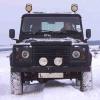
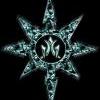
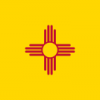
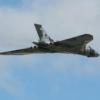

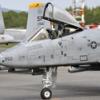
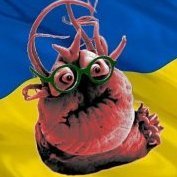
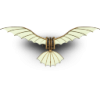
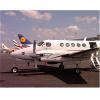
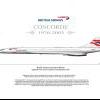
.thumb.jpg.0cb281983c298f55509ab7d9a06994bd.jpg)
